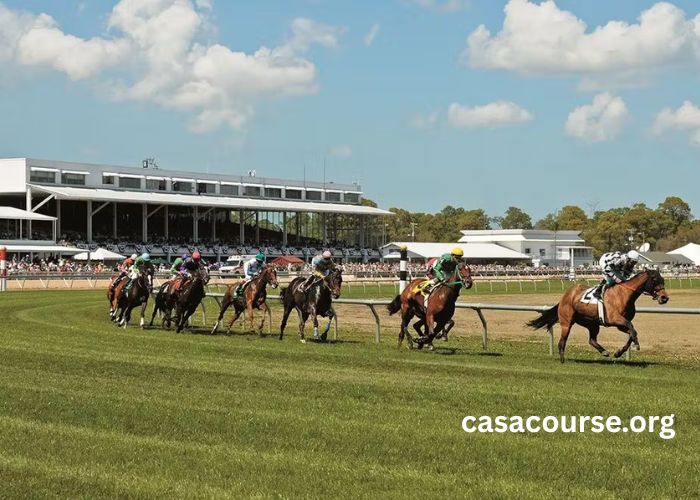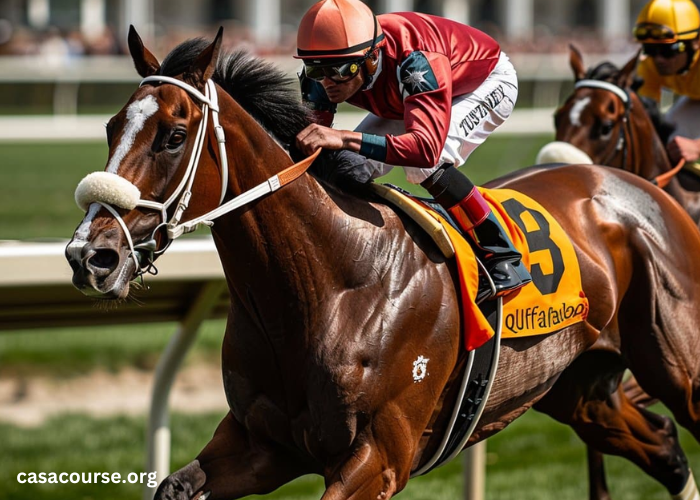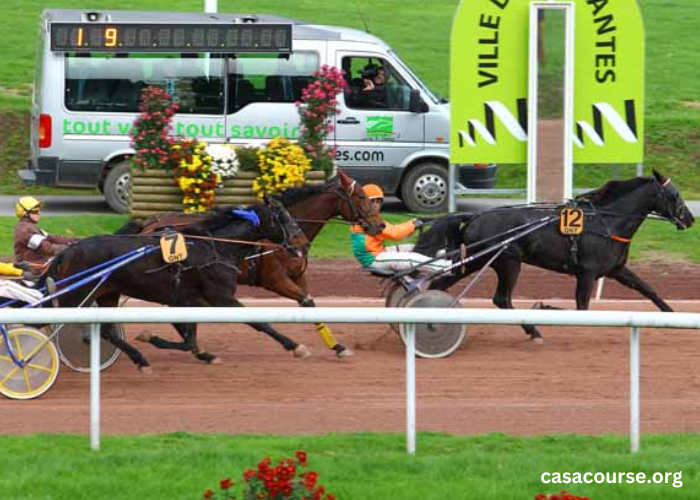The Turf Course is a critical element of horse racing, providing a natural surface that plays a major role in determining race outcomes. It offers unique challenges that make each race a distinct experience, both for the horses and their jockeys.
Over the years, the Turf Course has evolved with advancements in turf management and track design. It remains a favorite among racing enthusiasts because it adds complexity and excitement to every competition.
What Is A Turf Course?
A Turf Course is a type of racetrack that features a grass surface rather than the more commonly seen dirt or synthetic tracks. These courses are typically maintained with a variety of grass species that create an ideal running surface for horses. The course’s design and maintenance can vary, but it is generally considered a more challenging surface due to its unpredictable nature.
The grass of the Turf Course can affect the speed and stamina of the horses, as it offers more resistance compared to dirt tracks. The conditions on a turf track can change quickly due to weather, especially rain, which can make the track softer or firmer, adding another layer of difficulty. As such, races on a Turf Course can be quite unpredictable, providing a level of excitement that is unique to this type of surface.
What Are The Differences Between Turf Courses And Dirt Tracks?
The key difference between a Turf Course and a dirt track lies in the surface material itself. Dirt tracks are typically made of a mixture of sand, clay, and other materials, providing a firm and stable surface for racing. In contrast, a Turf Course uses natural grass, which can vary greatly in terms of texture and condition, depending on the type of grass and maintenance practices employed.
The Turf Course can be affected by weather in ways that dirt tracks are not. Rain can cause the grass to become slippery and soft, altering the pace and strategy of the race. On the other hand, dirt tracks tend to hold up well in all but the most extreme weather conditions. This difference in surface types leads to a different set of challenges for horses and jockeys, and is one reason why horses may perform differently on a Turf Course compared to a dirt track.
Why Do Racetracks Choose Turf Courses Over Other Surfaces?
Many racetracks opt for a Turf Course because it offers a more natural and visually appealing surface for racing. Turf racing is considered to be less taxing on the horses’ bodies compared to dirt, reducing the likelihood of injury. It is also seen as a traditional and prestigious surface, often associated with the highest levels of horse racing, such as in the renowned races held at venues like Ascot or the Kentucky Derby’s Turf events.
In addition to its aesthetic appeal, the Turf Course is favored for its ability to handle different types of weather conditions. While dirt tracks can become too muddy or hard, depending on rain or sun exposure, a well-maintained Turf Course can maintain its quality even after a rainfall, offering a consistent and competitive surface. The maintenance of a Turf Course, however, can be more labor-intensive and expensive, requiring meticulous attention to detail to keep the grass in prime racing condition.
How Does Weather Affect A Turf Course?
The condition of a Turf Course is highly influenced by the weather. When it rains, the grass on the track can become soft and boggy, which slows down the horses and requires adjustments to the race strategy. On the other hand, when the weather is dry, the turf can firm up, making the race faster and requiring the horses to adjust accordingly.
Jockeys must be familiar with the specific condition of the Turf Course on race day, as the track can change from race to race. For instance, a course may become “heavy” and soft after rain, or it may be “firm” under dry conditions. These variations can affect how horses are expected to perform, with some horses being better suited to one type of turf over another. The ability of a racetrack to manage its Turf Course conditions is a critical factor in hosting successful and competitive races.
How Are Turf Courses Maintained?
Maintaining a Turf Course requires a significant investment of time and resources. Turf grass must be regularly mowed, irrigated, and fertilized to ensure it remains in top condition for racing. Additionally, the soil underneath the grass must be carefully managed to ensure proper drainage and root health. The track’s maintenance crew must also monitor the condition of the grass to ensure that it does not become too worn down, especially in areas where horses make frequent turns or land heavily after jumps.
In addition to regular maintenance, racetracks must also manage the type of grass used for the Turf Course. Different varieties of grass have different properties, and some are more resilient to wear and tear than others. Some racetracks use hybrid grasses, which are designed to withstand the demands of racing while maintaining a high level of performance. Properly maintaining a Turf Course is essential not only for the safety of the horses but also for the overall quality of the racing experience.
What Are The Challenges Of Racing On A Turf Course?
Racing on a Turf Course can be challenging for both horses and jockeys. The surface is less predictable than dirt, with the grass varying in softness depending on weather conditions. This can make it difficult for horses to maintain consistent speed, as they must adjust to the ever-changing texture of the grass. The added challenge of dealing with soft or firm turf conditions requires skill and strategy from the jockey, as they must decide when to push the horse and when to conserve energy.
Additionally, the condition of the Turf Course can lead to injuries if not managed properly. Horses can easily slip on a wet or soft track, increasing the risk of falls or strains. For this reason, racetracks with Turf Courses must invest heavily in proper maintenance and care to minimize such risks and ensure the safety of the horses.
Conclusion
In conclusion, the Turf Course remains an essential and unique aspect of the horse racing world. Its natural surface creates a distinctive challenge for both horses and jockeys, contributing to the excitement and unpredictability of the races held on it.
Whether affected by weather, maintenance, or the choice of grass, the Turf Course offers an experience that differs from other types of racetracks, making it an important feature for horse racing enthusiasts and participants alike. Its ongoing maintenance and attention to detail are vital to ensuring its continued role as a premier racing surface.



